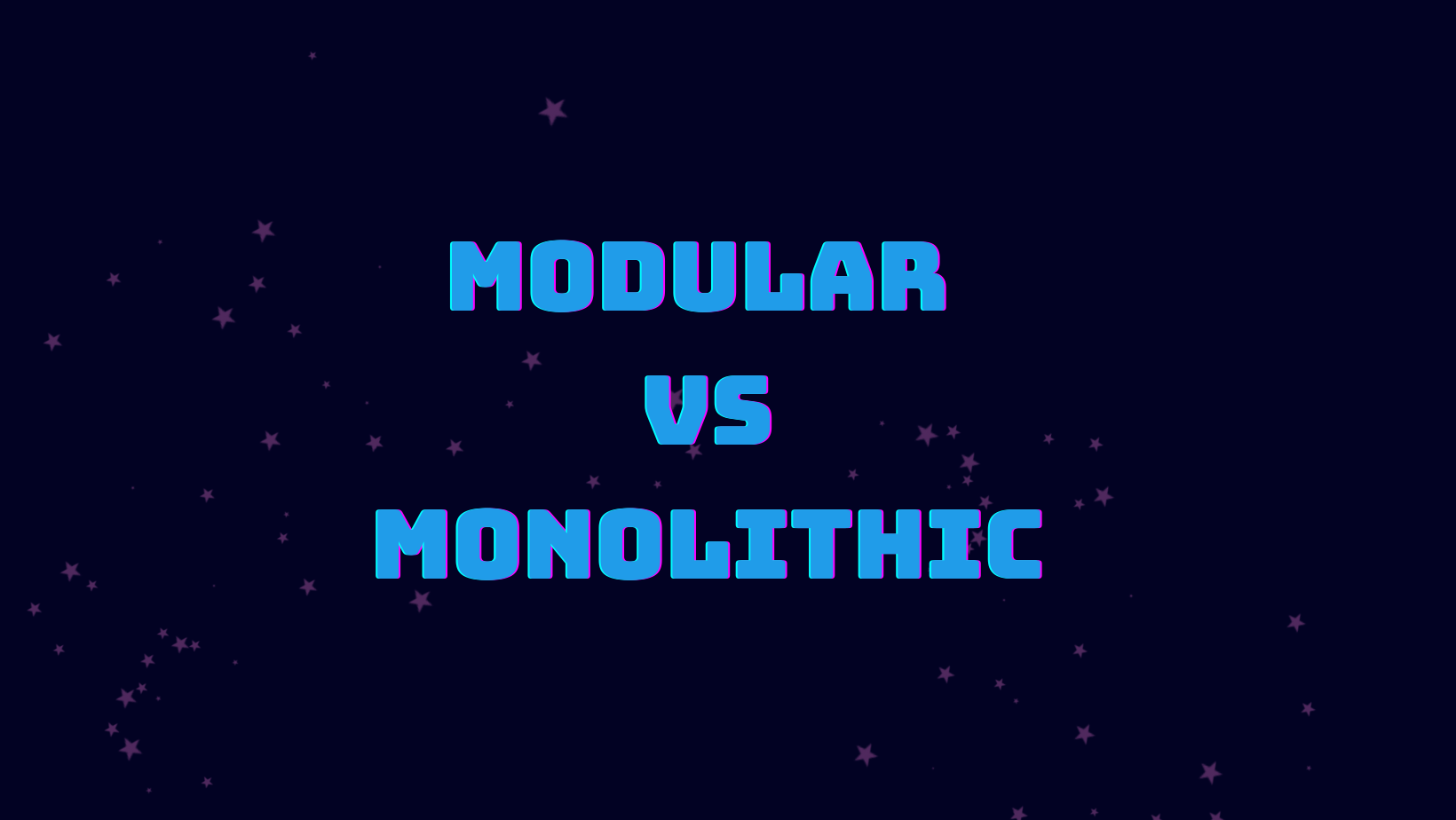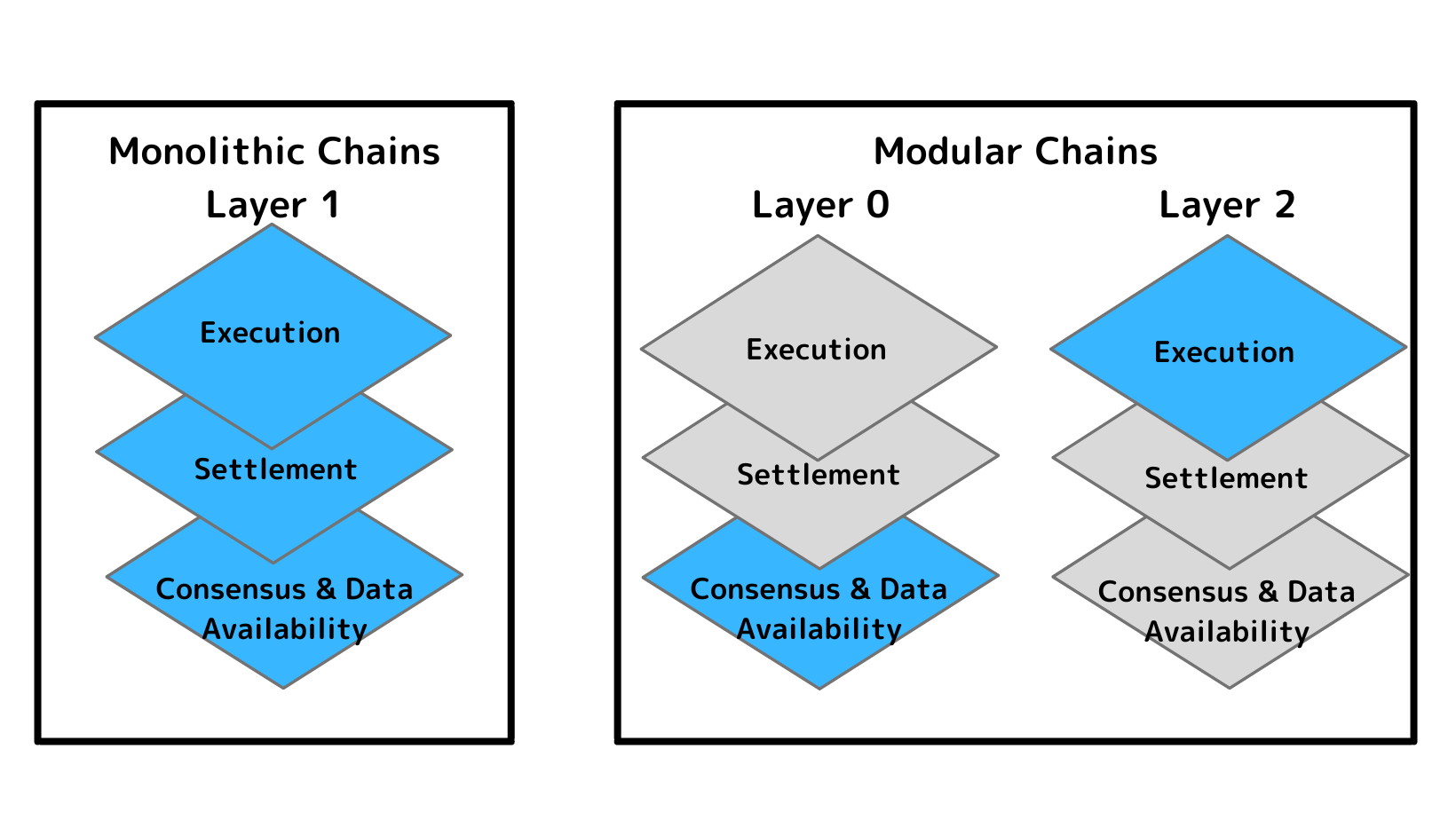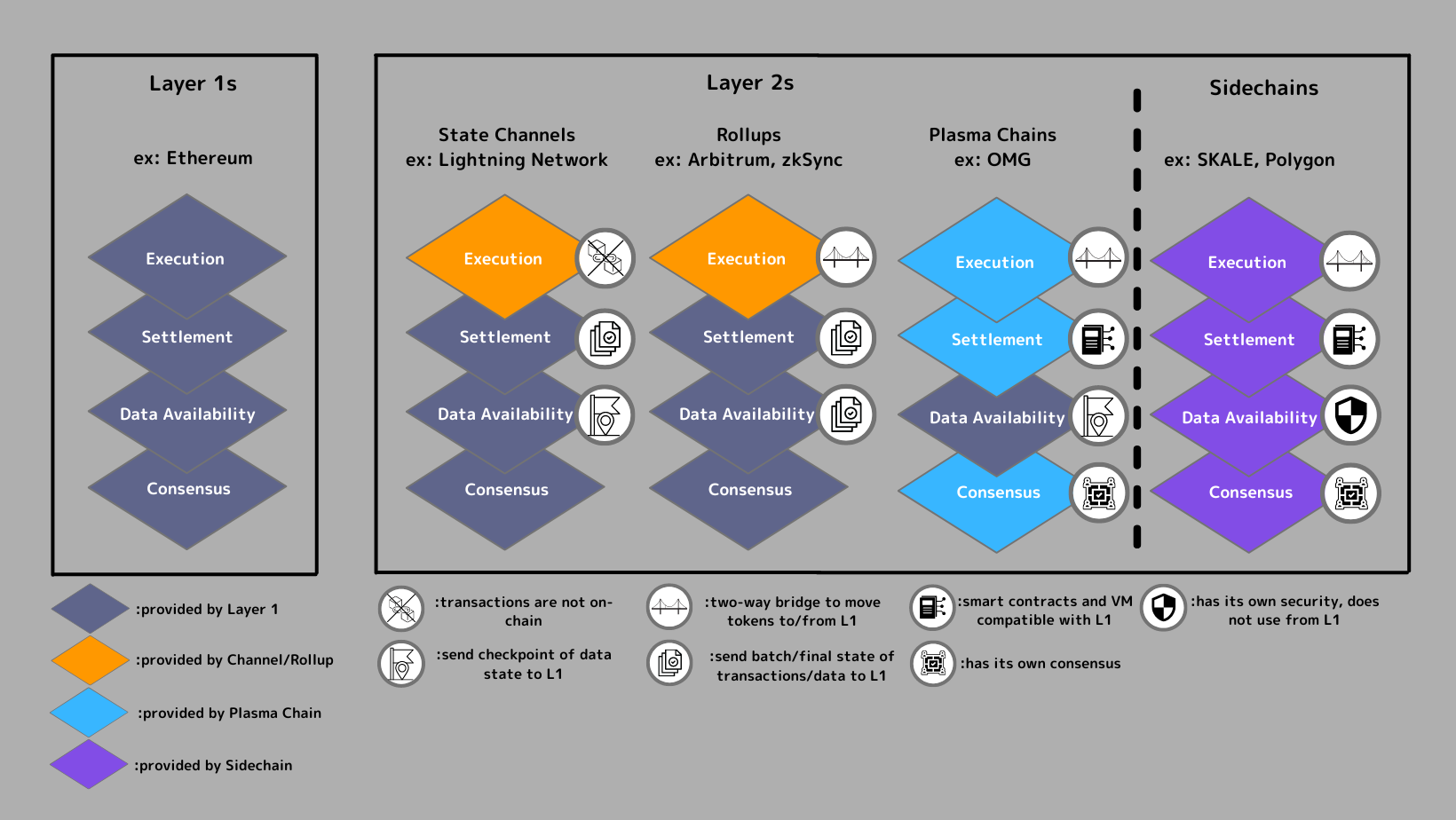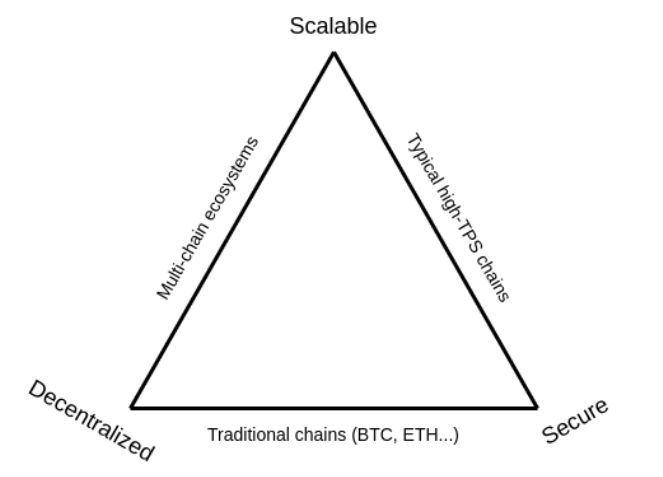
Modular vs Monolithic Blockchain
Monolithic vs Modular Blockchains
Blockchains consist of several key functions (known as layers) that work together to create a sufficient infrastructure for applications to be built upon. Those layers are consensus, data availability, settlement, and execution.
A blockchain that offers all four layers is known as a monolithic chain; these are commonly known as L1s or layer 1s. Chains that only execute one or two of those functions on a separate layer are modular chains; some modular chains are layer 0s and some layer 2s, depending on which functionalities they offer


Monolithic Blockchains
Monolithic chains have full autonomy as they determine their own mechanisms for consensus, execution, and everything else. The problem with building everything is that you can’t specialize in any one specific area.

Source: Vitalik Buterin
The scalability trilemma suggests that while blockchains need all three scalability, decentralization, and security, any layer 1 chain can only optimize for two of those three features.
The features are inversely related, meaning further decentralizing a blockchain would negatively affect either scalability or security depending on implementation. In the same vein, many layer 1 scaling solutions such as increasing block size will negatively impact decentralization.
A monolithic chain can either be great at two of those three features, or it can be just okay at all three.
In the future, better layer 1 scaling solutions will present themselves, such as sharding, but the main priorities of a chain would still remain on one edge of the scalability triangle.
Layer 2 solutions present an interesting concept for a layer 1 monolithic chain that intends to further optimize. It’s not practical to try to add in security or decentralization on top of an insecure or centralized network, so layer 2 solutions consist of scaling strategies.
Therefore, a monolithic chain can focus on decentralization and security, leaving scalability lacking on the base layer. Then, transactions can be outsourced to a scalable layer 2 (rollups, state channels, etc) where scalability can be optimized. Ethereum, Bitcoin, and other popular monolithic chains take this exact approach.
Modular Blockchains
Modular blockchains only focus on one or two features of a blockchain, and they rely on another chain (usually a monolithic layer 1) for everything else. Layer 2s are an example of modular chains.
Modular chains have the luxury of only having to focus on one area, such as execution. All development efforts can be directed to that one area, and other requirements such as consensus can be leveraged from the L1.
In the case of layer 0s such as Cosmos and Polkadot , interoperable modular chains are not at the mercy of any specific foreign L1 surviving. A properly compatible piece of infrastructure can be used by multiple chains to offer a consensus and data availability layer to their environments.
Layer 2s are generally not interoperable and do rely on their specific layer 1 for consensus and data availability. They need to follow the lead of L1 updates and make sure they remain compatible because they are useless without the L1. If security on the L1 declines, there’s nothing an L2 can do about it.
Which Is Better To Compete With Ethereum?
Ethereum is the undisputed leader of smart contract networks. To get a piece of that market share, some build monolithic layer 1s, and some build modular chains that leverage Ethereum’s security and decentralization. Some even build modular chains that don’t use anything from Ethereum; they rely on monolithic alt L1s or reciprocal modular chains to complete them.
Monolithic
As shown by the scalability trilemma, a new monolithic chain that hits all three categories in a single layer can’t be built. That leaves three different combinations as options.
A chain focused on scalability and decentralization would lack security. A lack of security would make any chain unusable.
A chain focused on decentralization and security would be directly competing with Eth, which is an uphill battle against its massive community - unless some key change is made. Ethereum improves its layer 1 protocol all the time with updates to make it more deflationary, scale better by dividing the network, or for any number of reasons, so the difference between Eth and this alt monolithic chain would have to be different on a fundamental level.
One approach is privacy: some monolithic layer 1s compete with Eth by offering base level privacy. Another approach is creating a specialist chain for a type of infrastructure or a dapp. Ethereum is a generalist chain, so market share can be taken by a chain that optimizes the experience for a particular activity.
That leaves the combo of scalability and security, which may have some merit. Decentralization was a core concept for early blockchains, but it may not fit every use case.
A more centralized chain in exchange for extremely efficient scalability can be very appealing to the right parties. Solana and some other alt layer 1s take this approach to their monolithic chains. That centralized use case is different, so it’s not direct competition with Ethereum
Modular
On the other hand, why build a whole new chain and try to compete with Ethereum’s battle-tested security and excellent decentralization. You’d only have to specialize in one thing, scalability, and wouldn’t have the burden of enhancing the other factors. You’d be using Ethereum’s best features rather than competing with them.
Layer 2s are simpler to build, but ultimately at the mercy of another chain. That other chain happens to be Ethereum, which is the industry leader. Building with Ethereum rather than against it is a strategy to take for those that believe Ethereum is here to stay.
Past scalability, layer 2s can focus on other areas such as privacy, trading, or gaming if they choose to. Not having to upkeep consensus and data availability opens up many possibilities for a specialist chain.
Use Case Determines the Best Solution
Monolithic chains that wish to compete with Ethereum better have an important distinction to appeal to a specific user base if they’re to take any market share from the leading generalist blockchain. Modular chains lack full autonomy, but are much simpler for core developers, application developers, and users to get moving with. The future is multi-chain, and it’s unlikely that one chain will take over everything, so it’s good to have diversity and options for building new tools.

